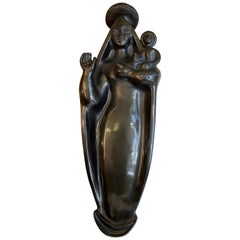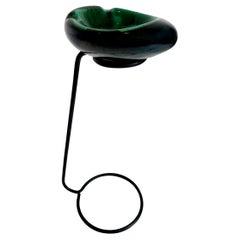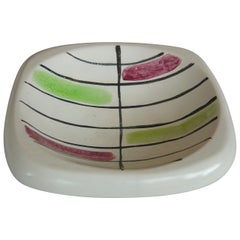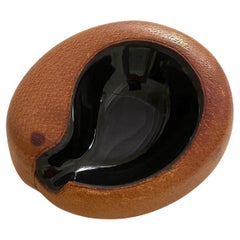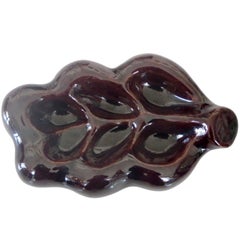Georges Jouve Furniture
Georges Jouve was a modern-era ceramicist with a tirelessly creative spirit. He began his career creating vases and other utilitarian vessels but soon renounced anything produced on a pottery wheel in favor of modeling and sculpture techniques. Forms found in nature inspired him to create unusual pieces — large cups that rolled up like vast seashells, curiously stylized birds — all springing from an alert imagination. He left an indelible mark as an unconventional ceramist.
Jouve was born in France, in 1910, to a family of decorators. At 17, he enrolled in the Ecole Boulle in Paris, where he studied sculpture. After graduation in 1930, he became a theater-set designer to help support his new wife and family. He only dabbled in ceramics when he had time — and that time did not present very often.
During World War II, Jouve was interned in a German forced-labor camp for his political views. He eventually escaped and hid at his stepparent’s home in southern France — where he indulged in his passion for ceramics to pass the time. In 1944, after the Germans left Paris, he returned to the city and pursued his dream of opening a ceramics studio.
Jouve’s work caught the eye of furniture designer Jacques Adnet, who asked him to participate in the Contemporary Ceramics Exhibition, which was hosted by a decorating and publishing house founded by architect Louis Süe and painter André Mare. His work was warmly received, and his pieces began to sell.
From there, Jouve started to participate in numerous exhibitions. At the 1947 Urban Planning Exhibition in Paris, he won a silver medal for a wall covering. His work was then displayed at several international traveling exhibitions presented by the French Ministry of National Education and Ministry of Foreign Affairs, from 1947 to 1950.
In 1954, Jouve left Paris to set up workshops in southern France, where he concentrated on ceramics research and new techniques. His experimentation resulted in breathtaking pieces that other artists have attempted to copy for decades.
On 1stDibs, find Georges Jouve serveware, ceramics, pitchers and more.
1940s French Vintage Georges Jouve Furniture
Ceramic
1950s French Vintage Georges Jouve Furniture
Iron
1950s French Mid-Century Modern Vintage Georges Jouve Furniture
Ceramic
1950s French Mid-Century Modern Vintage Georges Jouve Furniture
Earthenware
1950s French Vintage Georges Jouve Furniture
Iron
15th Century and Earlier German Gothic Antique Georges Jouve Furniture
Wood
Late 20th Century Georges Jouve Furniture
Metal
1950s French Mid-Century Modern Vintage Georges Jouve Furniture
Earthenware
Late 20th Century Spanish Georges Jouve Furniture
Wood
1950s Vintage Georges Jouve Furniture
Ceramic
1950s European Vintage Georges Jouve Furniture
Ceramic
1950s Vintage Georges Jouve Furniture
Ceramic
1630s Spanish Renaissance Antique Georges Jouve Furniture
Wood
1940s French Vintage Georges Jouve Furniture
Ceramic, Leather
1940s French Mid-Century Modern Vintage Georges Jouve Furniture
Ceramic
1940s French Mid-Century Modern Vintage Georges Jouve Furniture
Ceramic
1940s French Modern Vintage Georges Jouve Furniture
Stoneware
1940s French Art Deco Vintage Georges Jouve Furniture
Ceramic
1940s French Vintage Georges Jouve Furniture
Enamel
